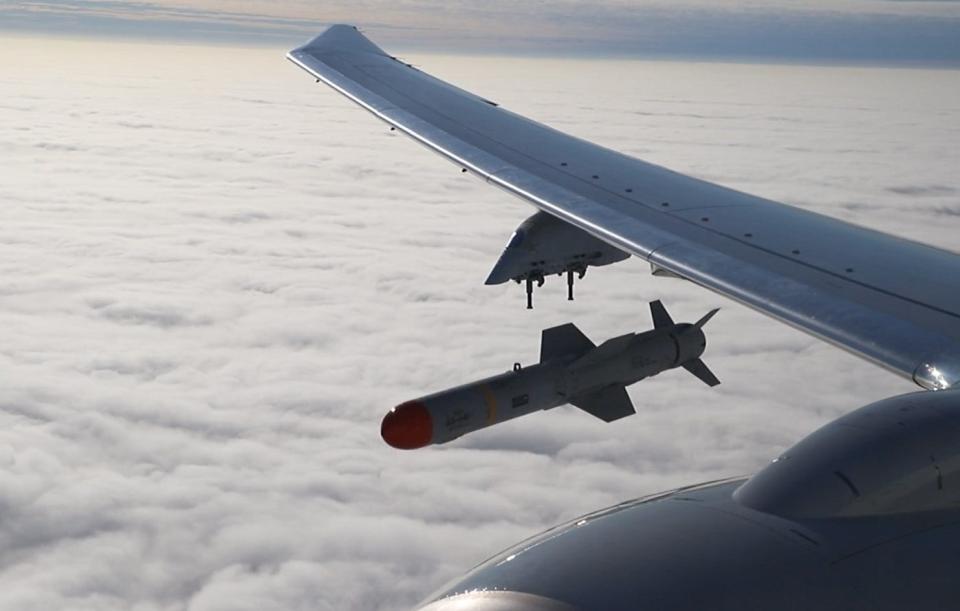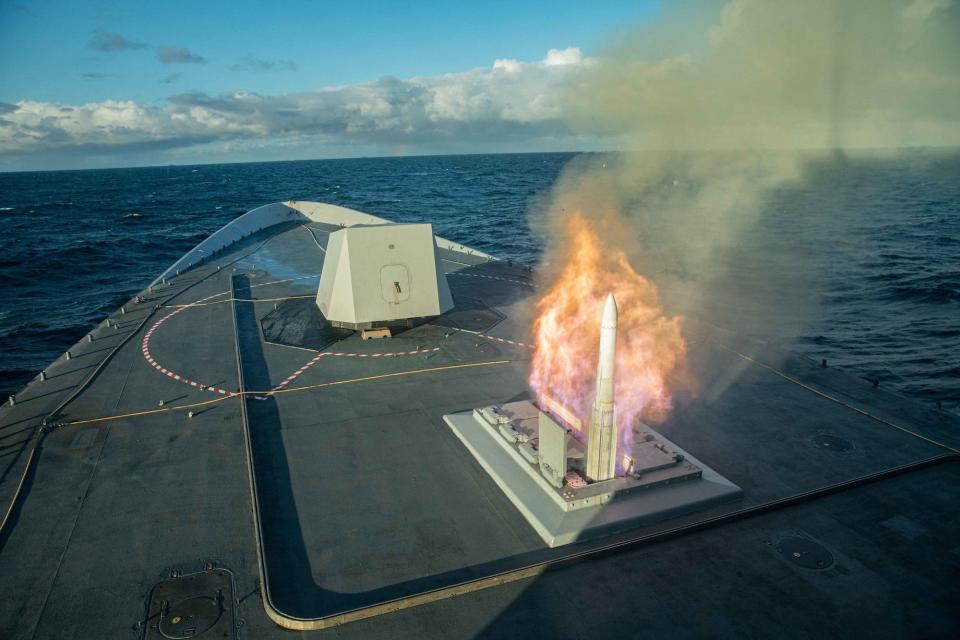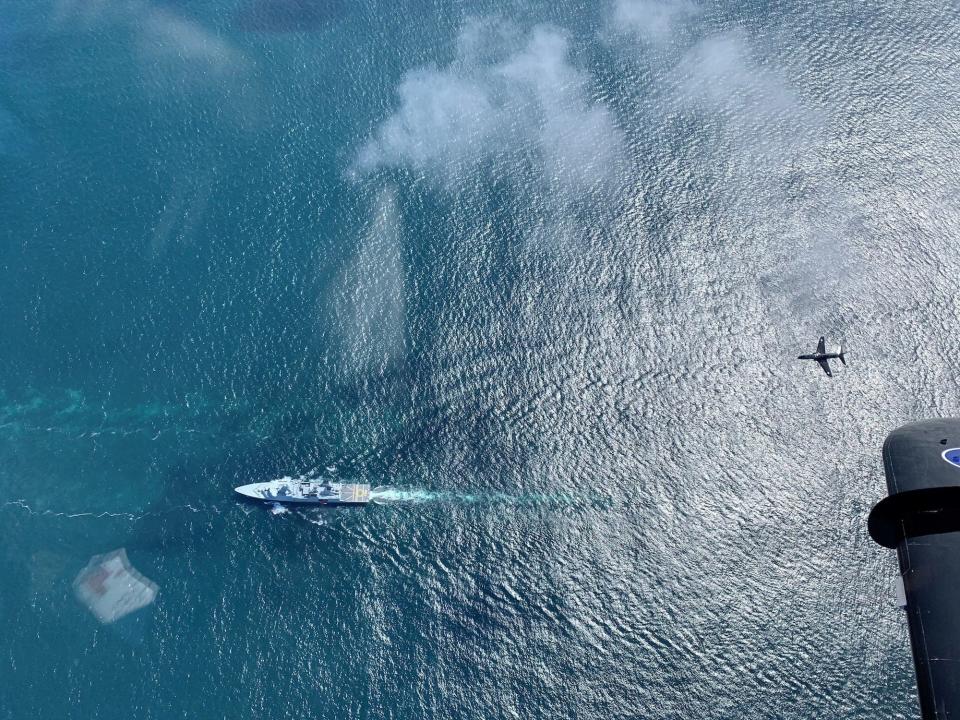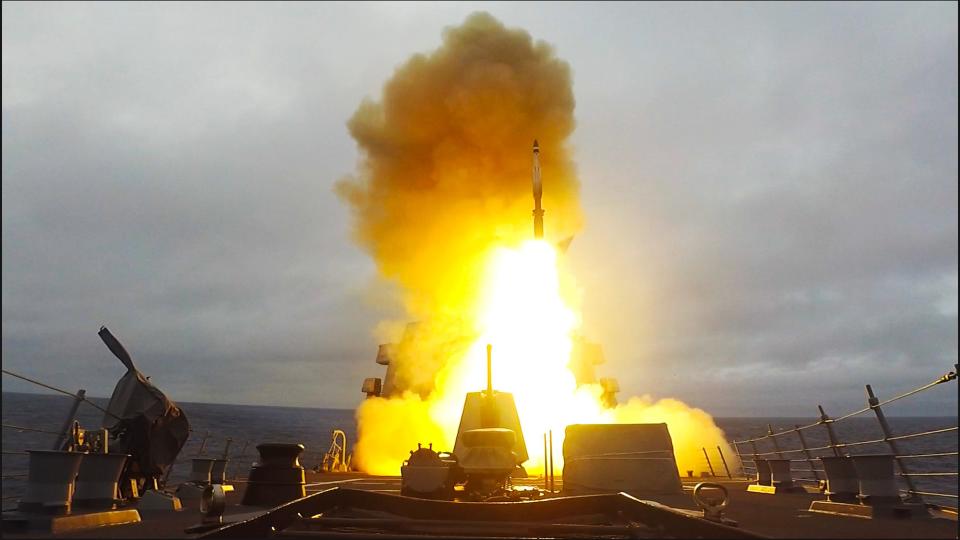The US Navy's top sub-hunting plane conducted a first-of-its-kind missile launch in Europe's high north

US Navy P-8A Poseidons launched Harpoon missiles in Europe for the first time last month.
The launches, part of an exercise off northern Norway, are the latest military activity in the increasingly busy waters of the Arctic.
Officials stressed the defensive focus and said it wasn't conducted with a specific foe in mind.
US Navy P-8A Poseidons launched AGM-84D Harpoon missiles in Europe for the first time last month during an exercise off of northern Norway, another sign of the increasing military focus on the strategically important region.
The P-8s, widely considered the best maritime patrol planes in operation, launched the missiles at a target barge near the Andøya Space Defense facility in northern Norway during the exercise At-Sea Demonstration/Formidable Shield.
The exercise focused on missile defense and most used during it were surface-to-air interceptors, but the Harpoons - so named because they were first designed to target surfaced submarines, or "whales" - were air-to-surface variants.
As an anti-ship missile, the Harpoon gives the P-8 "the ability to challenge enemy naval movements, either in support of offensive operations or in order to defend friendly forces," the US Navy's Sixth Fleet said in a release.

"At-Sea Demo/Formidable Shield provided a realistic opportunity to exercise" the Poseidon's ability to "project lethal fires," Cmdr. Kyle Raines, Sixth Fleet public affairs officer, told Insider in a statement.
At a briefing before the exercise, which is held every other year, officials stressed the defensive focus and said it wasn't conducted with a specific foe in mind.
US Navy Capt. Jonathan Lipps, who directed the exercise, said it wasn't "targeted against a specific country or threat" but had evolved in response to state and non-state actors' use of drones, cruise missiles, and ballistic missiles.
"It's about protecting both maritime units and the land environment from the missile threat, not about, if you like, offensive missile capabilities. It's about defensive missile capability," said British Royal Navy Rear Adm. James Morley, deputy commander of Naval Striking and Support Forces NATO, which conducted the exercise.
This year's iteration was "the most complex joint and combined integrated air- and missile-defense exercise ever conducted at sea," Lipps said.

The missiles used during the exercise were "a good example of a growing recognition" that successful combat operations in the future will "require close coordination of offensive and defensive systems," said Ian Williams, deputy director of the Missile Defense Project at the Center for Strategic and International Studies.
"There are a lot of efficiencies that can be gained by integrating strike and defense, particularly in sensors, to detect enemy missiles and to locate and neutralize the shooter," Williams told Insider in an email.
There are also more practical reasons to fire Harpoons from P-8s.
Like its predecessor, the P-3 Orion, the Poseidon "has an anti-surface-warfare mission, and the Harpoon missile is the current armament that meets that requirement, so it is not a surprise that the aircraft is exercising that capability," said Steve Wills, a military historian and expert on US Navy strategy.
"Every naval platform has live-fire exercise requirements, so this firing could be one of those," Wills added in an email.
'Credible threats'

Morley and Lipps both emphasized that At-Sea Demo/Formidable Shield - which began near Scotland and concluded around Andøya - was long-planned and preceded by notice about where it would take place, but comes as military activity in the region increases significantly.
In late 2018, NATO conducted exercise Trident Juncture in and around Norway. Some 50,000 personnel took part in the exercise, which saw a US aircraft carrier sail into the Arctic for the first time since the early 1990s. The US military has been more active in Norway in recent months.
NATO navies have also conducted exercises in the Barents Sea, close to major Russian military installations, for the first time in decades.
Russia, which has the world's longest Arctic coastline, has been increasing its presence in the region, refurbishing bases and deploying more forces. Its Nordic neighbors have been concerned by its military tests in the region, particularly with weapons like the Kalibr cruise missile.

The Kalibr gives Russian ships and subs a land-attack capability that worries NATO. The Kalibr and other Russian weapons fired from the Barents Sea would be able to reach targets in Norway.
Russian submarine activity around the Norwegian Sea has also concerned NATO countries, particularly Norway and the UK, which have both purchased P-8s to patrol their waters.
At-Sea Demo/Formidable Shield concluded on June 4 and navies involved touted several achievements during it.
A US destroyer and a Dutch frigate worked together to "negate" a ballistic missile threat in what the US Navy called "a groundbreaking cooperative engagement." Norway's navy said one of its frigates used a missile to down a target moving at supersonic speed for the first time. The British navy tested artificial intelligence against live missiles at sea, also for the first time.
The exercise "unquestionably demonstrates" NATO's ability to defend its "integrity and resolve against credible threats from the ocean depths to low-earth orbit," Lipps said in a statement.
Read the original article on Business Insider

